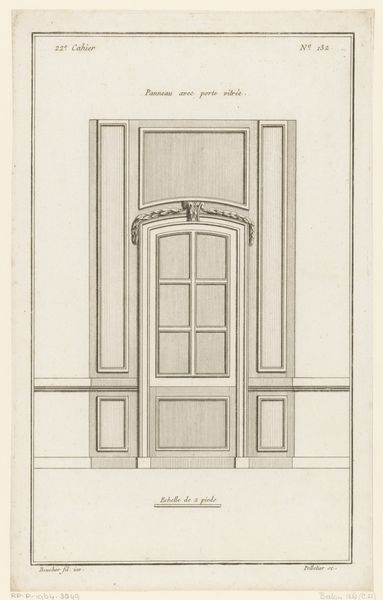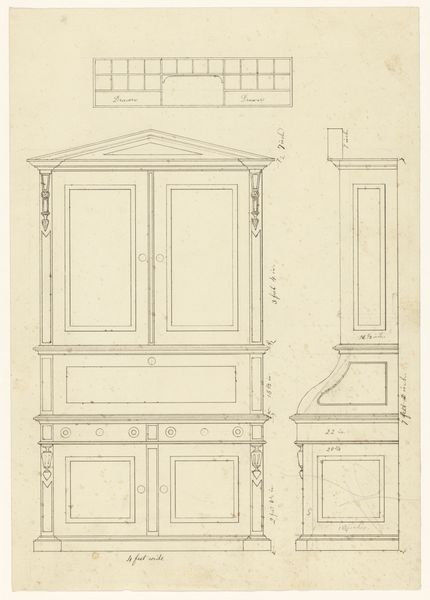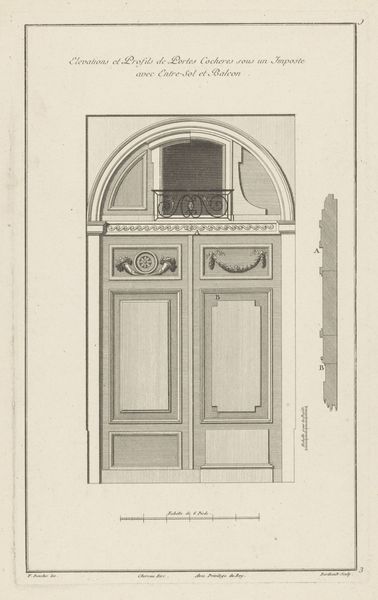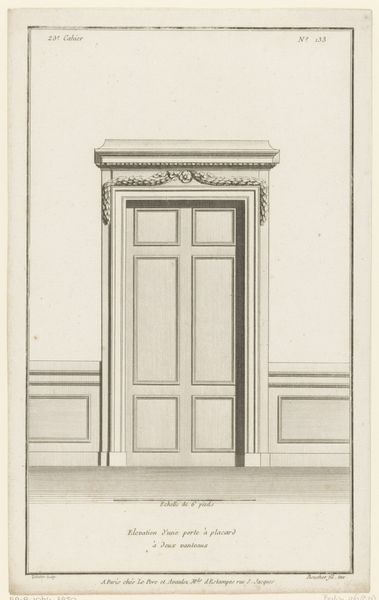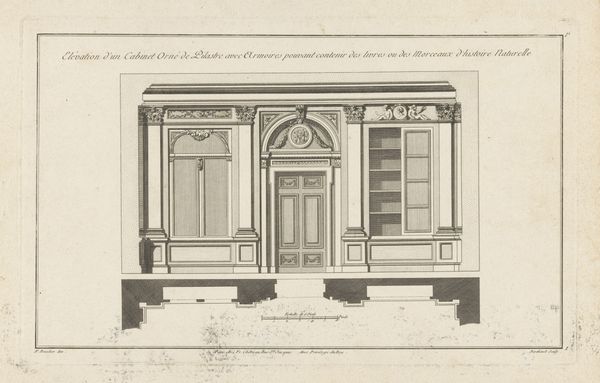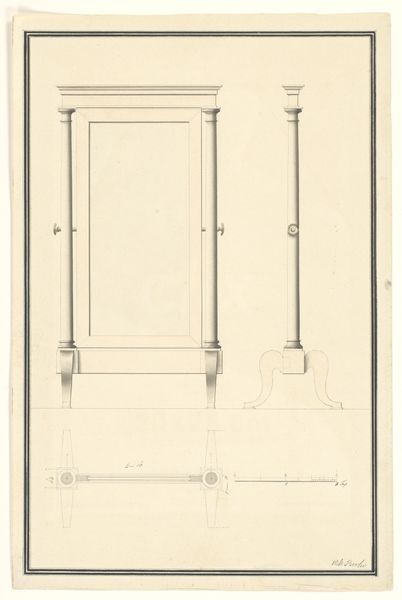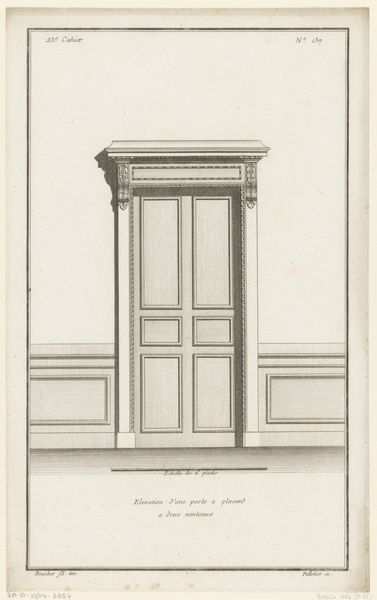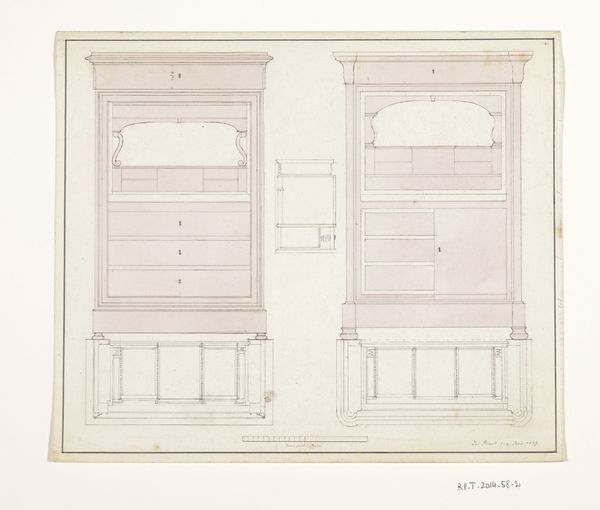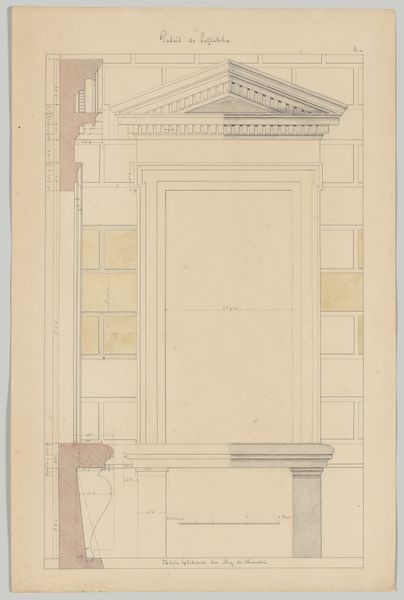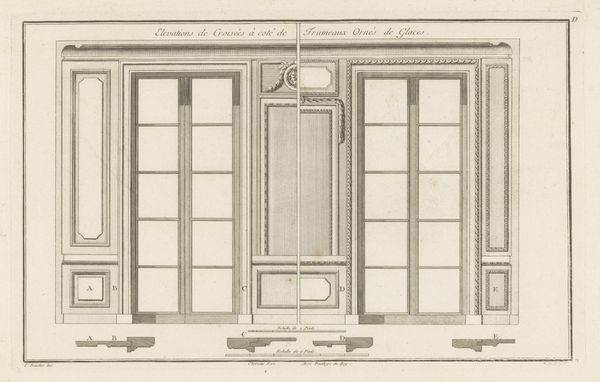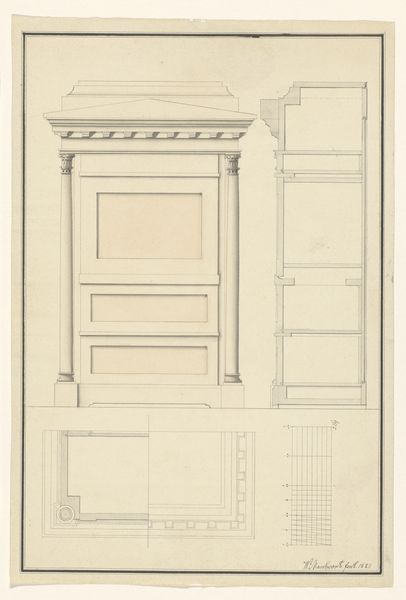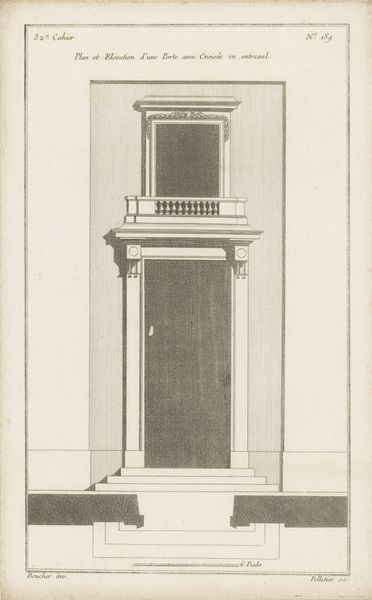
Ontwerp voor een tweedeurskast met plattegrond en zijaanzicht, een profiel, een commode en een tweede tweedeurskast 1848
0:00
0:00
drawing, paper, pencil, architecture
#
drawing
#
neoclacissism
#
perspective
#
paper
#
form
#
geometric
#
pencil
#
line
#
architecture
Dimensions: height 498 mm, width 373 mm
Copyright: Rijks Museum: Open Domain
Curator: This is "Ontwerp voor een tweedeurskast met plattegrond en zijaanzicht, een profiel, een commode en een tweede tweedeurskast," a design drawing dating to 1848, crafted in pencil and ink on paper. Editor: My goodness, it's a rather austere vision, isn’t it? Such precise lines… almost clinical in its presentation. A blueprint for functional containment, wouldn't you agree? Curator: Precisely. Note the artist, B. Winghofer’s commitment to neoclassical ideals here; every line speaks to an interest in geometrical harmony. The drawing reveals so much about 19th-century artisanal practice. We see not just the façade, but multiple elevations—a genuine cross-section of construction itself. Editor: It's curious how these forms carry echoes of ancient temples – the cabinet with its pediment feels almost like a miniature Parthenon. Is it an attempt to ennoble the domestic sphere? To imbue everyday life with a sense of timeless grandeur? Curator: In a way, yes. By mimicking classical architectural forms, Winghofer elevates the status of furniture-making. What was a crafted object is instilled with the authority of those forms. Consider the labor and materials – the types of wood specified, the craftsmen involved, the transportation of materials - each played a crucial role in defining taste. Editor: The geometric patterns speak volumes, indeed! Beyond its architectural references, one might also say that each choice – the arrangement of panels, the restrained ornamentation - echoes prevailing social codes and power structures. The implied user had to show their power through restraint. Curator: Indeed! This meticulous drawing serves not only as an instruction for building but as a statement about craftsmanship. Editor: So, in looking at this meticulous blueprint, we can discern layers of meaning, from artisanal traditions to the symbolic vocabulary of design. Curator: I agree. Through close observation, what seems initially like a mere design becomes a document revealing not just intent, but of labor, and, indeed, of aspiration.
Comments
No comments
Be the first to comment and join the conversation on the ultimate creative platform.
